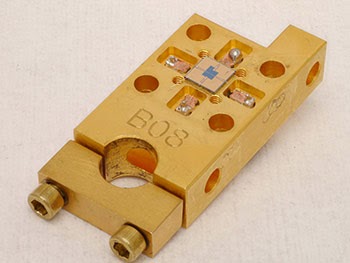It's not quite Star Trek communications—yet. But long-distance communications in space may be easier now that researchers at the National Institute of Standards and Technology (NIST) and Jet Propulsion Laboratory (JPL) have designed a clever detector array that can extract more information than usual from single particles of light.
Described in a new paper,* the NIST/JPL array-on-a-chip easily identifies the position of the exact detector in a multi-detector system that absorbs an incoming infrared light particle, or photon. That's the norm for digital photography cameras, of course, but a significant improvement in these astonishingly sensitive detectors that can register a single photon. The new device also records the signal timing, as these particular single-photon detectors have always done.
The technology could be useful in optical communications in space. Lasers can transmit only very low light levels across vast distances, so signals need to contain as much information as possible.
One solution is "pulse position modulation" in which a photon is transmitted at different times and positions to encode more than the usual one bit of information. If a light source transmitted photons slightly to the left/right and up/down, for instance, then the new NIST/JPL detector array circuit could decipher the two bits of information encoded in the spatial position of the photon. Additional bits of information could be encoded by using the arrival time of the photon.
NIST:
Clever NIST/JPL Technology Decodes More Information from Single Photons, Laura Ost

Comments